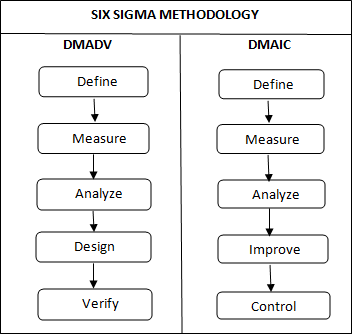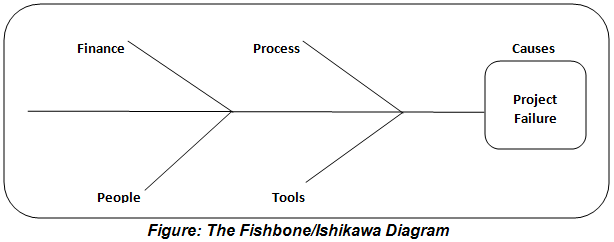Introduction to Six Sigma Interview Questions
Six Sigma is a methodology that uses the statistical measure to improve business processes by reducing or eliminating any chances of errors/defects and costs associated with it. Thus, it is focused on the elimination of defects by reducing process variability. So, if you are planning to make your dream career in Six Sigma and are preparing for the same, here are some six sigma interview questions at a glance that might help you crack the interview.
Apart from confidence, sound knowledge of the subject is what interviewer’s usually rate you on. There is always a hint of nervousness when you are up for a job interview. Because one can never know, what would be the questions that would be the deciding factors? So, it is always important to go well-prepared and well-rehearsed for an interview. The following questionnaire is a set of 10 questions, having good chances of being asked to a Six Sigma job aspirant.
Six Sigma Interview Questions and Answers
Let’s take a quick glance at frequently asked interview questions:
Q1. What needs to be considered First before Starting a Six Sigma Project?
Answer:
First, it is essential to determine the Process Stability, whether or not, the data is normal. If the process is unstable, the project cannot be implemented. In that case, the process is made stable and process normality is determined. As per the process normality or non-normality, the process capability is identified. Process capability signifies, whether or not, the process is capable to implement the project.
Q2. Describe the Quality levels of Six Sigma.
Answer:
It is a method, where a set of tools is used to measure process quality. It signifies how well the business process is monitored. Each sigma level corresponds to a number of acceptable defects per million. The optimum sigma level is attained when business process accuracy goes to 3.4 defects per million opportunities.
The list below highlights the admissible no of defects per million in correspondence to each sigma level:
1 – 6,90,000
2 – 3,08,537
3 – 66, 807
4 – 6, 210
5 – 233
6 – 3.4
Q3. Describe the Two Quality Management Methodologies used for Six Sigma Execution and Design.
Answer:
DMADV is used for business designing and DMAIC is used for process improvement.
DMADV methodology is used when a product/process is non-existent and the company has to develop the same. While DMAIC is used when the existing process or product is not performing properly or meeting customer expectations and is required to be optimized. DMAIC is used for product/process retrieval.
Q4. Describe the Different Variations used in Six Sigma.
Answer:
Mean, Median, Mode, and Range are the variations used in Six Sigma.
- Mean: The mathematical method of averaging is used to evaluate and compare the variations by taking measures of a specific application.
- Median: In this type, variations are evaluated and compared using the mid-point of a specific date range. The greatest and lowest value is determined in a data range and divided by two and the lowest value is added to the same.
- Mode: Mode calculates the variation by identifying the most occurred values in a data range.
- Range: Range is the difference between the greatest and lowest value in a particular data range.
Q5. Explain Standard Deviation.
Answer:
Standard Deviation is the most accurate method of measuring variation. It measures the degree of variation in a set of measurements by calculating the average spread of data around the mean.
Q6. Explain the Difference between Load Testing and Performance Testing.
Answer:
Load testing tests a program or an application on its capacity to handle a certain limit, where the load limit is beyond the client’s requirement. Performance testing is used to test the responsiveness and stability of a particular program or system under a certain workload. Thus, it is inclusive of load testing and stress testing.
Q7. What is the Pareto Principle?
Answer:
Based on the 80/20 concept, the Pareto Principle is an effective problem-solving method in management. It is based on the concept that 80% of your problems are resulted out of 20% of your problems. So, instead of focusing on 80% of your problems, if you focus on 20% of your problems, most of the problems or troubles are prevented. Thus, it aims to analyze and focus on 20% of critical problems or issues to prevent further failures.
Q8. Explain the Fishbone / Ishikawa Diagram.
Answer:
Fishbone is a concept introduced by Ishikawa; hence it is named so. The diagram resembles a fishbone and is a visual framework that categorizes potential issues or failures in a project to determine its root causes.
The fish head represents the defect/project failure. The ribs branch off the backbone which represent the major causes pertaining to Finance, People, Process and Tools. These are later sub-branched to as many causes as identified by the project team. For example, A project failed, as on the process front, the process was ADHOC due to tight deadlines, because of the marketing team over-promised and is negotiated with the end customers.
Q9. What is FMEA in Six Sigma?
Answer:
FMEA stands for Failure Mode Effect Analysis. It is a tool used by Six Sigma practitioners to anticipate risk within a process, system or product so as develop a risk mitigation plan. It uses a scoring model based on Severity (S), Occurrence (O) and Detectability (D).
Thus, it assesses a problem by:
- By identifying the severity of the effect on the customer.
- The frequency/likelihood of the problem to occur.
- And, how easy it is to detect a problem.
Q10. Explain the SIPOC Process Map.
Answer:
SIPOC denotes Suppliers, Input, Process, Output, Customers. It is a process containing a series of steps to be executed in a timely manner to get the desired output.
The following elements are identified by the SIPOC map:
- How well the ongoing processes are operating?
- How the processes are modified to improve?
- How the improvement is implemented?
So, these are some of the important questions that could be asked in Six Sigma Interview. Since it is a vast subject, you need to be well-prepared with the concepts, as the interviewer might test you on many different parameters. This questionnaire highlights some of the essential concepts which you need to be aware of.
Recommended Articles
This has been a guide to List of Six Sigma Interview Questions and Answers so that the candidate can crackdown these Six Sigma Interview Questions easily. You may also look at the following articles to learn more –





